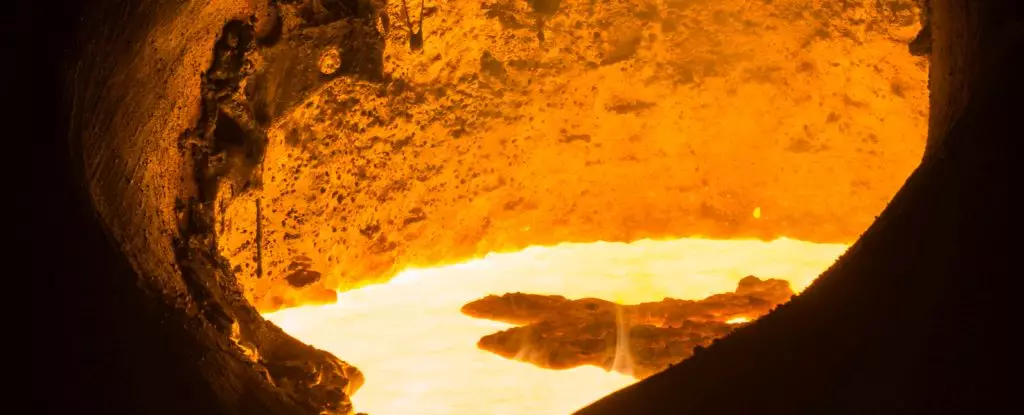Recent revelations from geochemical research have set the scientific community abuzz: the Earth’s core, it appears, is not merely a dense, metal-rich center but rather a veritable treasure trove of precious metals, including gold. As exciting as this discovery is, it prompts us to ponder the implications of such a vast wealth existing just beneath our feet while humanity grapples with issues like wealth inequality and resource distribution. The findings suggest that the core is gradually leaking its riches through the mantle to the crust, carried by convecting magma. This insight raises profound questions about the nature of our planet and how we perceive the wealth beneath our surface.
The Golden Hoard: A Planetary Perspective
Imagine a dragon hoarding gold; this metaphor resonates with our understanding of Earth’s resources. Reports indicate that over 99% of the planet’s gold is locked within its metallic core. As geochemist Nils Messling excitedly proclaimed, the first results of their research felt akin to striking gold, and indeed they had! The notion that much of Earth’s wealth is hidden away challenges the age-old adage of a “land of opportunity.” If 99% of gold lies entombed deep within our planet, then who truly benefits from the minuscule amount that reaches the crust? This brings to light the disparities that exist not only on the surface but in the very fabric of our planet.
Scientific Exploration: The Hunt for Isotopes
Delving deeper, scientists turned their attention to isotopes, the distinct versions of elements that provide a clearer picture of their origins. In particular, the study of ruthenium isotopes has provided invaluable insights into the origins of precious metals within the Earth’s crust. By distinguishing between ruthenium isotopes from the core and those generated through space impacts, researchers have created a new lens for viewing Earth’s elemental history. This kind of scientific inquiry is not merely academic; it has real-world implications as it can influence mining practices, resource management, and economic policy.
As Messling and his team employed innovative techniques to measure these isotopes, they unveiled a treasure map of sorts; while the discoveries may not yield easy riches for mining today, they are reshaping our understanding of the Earth’s geology. The implications reach beyond gold to include other precious metals like palladium and rhodium, which have become increasingly valuable in modern technology. While the discovery of these isotopic variations is exciting, it remains a sobering reminder: access to Earth’s wealth is tied up with technological innovation, investment, and, often, environmental sacrifice.
A Paradigm Shift in Planetary Science
This research does more than uncover hidden wealth; it fundamentally alters our conception of how active and interconnected Earth’s layers are. Geochemist Matthias Willbold’s assertion that the core is not as isolated as we previously believed invites us to reconsider established geological paradigms. Geology has often framed the core as a stable, static element; however, the suggestion of a dynamic transfer of elements opens a myriad of possibilities for understanding not only Earth but other terrestrial planets as well.
This revelation sheds light on the processes that shape planetary evolution. If other rocky planets also contain similar mechanisms, the implications for the search for extraterrestrial life are significant. As we seek to understand our universe and our place within it, this layered understanding of Earth’s geology will challenge us to reassess not only what lies beneath our feet but also how we interact with the broader cosmos.
Wealth Redistribution: A Call for Equitable Resource Management
In light of these revelations, we’d be remiss not to address the ethical implications of resource distribution. Earth’s wealth exists in stark contrast to the socio-economic realities faced by millions. As we learn more about the vast riches hidden in our planet’s interior, we must also confront the urgent need for fair and equitable resource management. Should we treat this newfound knowledge as a license for exploitation, or can it serve as a catalyst for thoughtful dialogue on sustainability and responsible governance?
This sense of responsibility extends beyond our species to future generations. If 99% of Earth’s gold remains inaccessible, what plans do we have for the more attainable resources? The discoveries about our planet’s hidden treasures should propel us into discussions about environmental stewardship and the equitable sharing of resources. Isn’t it time we viewed the Earth’s treasures not merely as commodities but as a shared heritage that demands careful stewardship?

